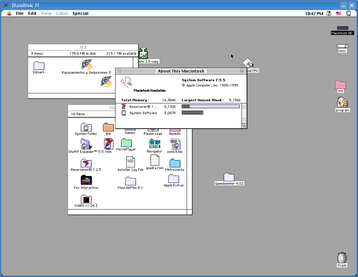



However, because QEMU is a much lower-level emulator, that means that things like mice are also emulated, and that tends to chug a bit even with QEMU's JIT (currently KVM-PR, the virtualization system for Power ISA, does not work properly with Mac OS 9 in QEMU for reasons that have not yet been determined). Indeed, certain classes of application can only run in that context. Although I'd much rather use a real Power Mac, and of emulators I tend to use my own bespoke hopped-up fork of SheepShaver for the POWER9 CPU with my daily driver, QEMU is still important for Mac OS 9 emulation because it handles the full system rather than the quasi-paravirtualization approach of SheepShaver.


 0 kommentar(er)
0 kommentar(er)
